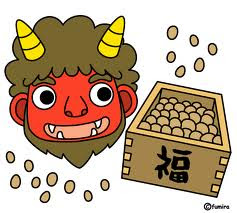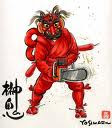:::::::::::::::::::::::::::::::::::::::::::::::::::::::::::::::::::::::::::::::::::::::::::::::::::::
Mulberry, mulberries (kuwa no mi)
***** Location: Japan
***** Season: Mid-Summer, see below
***** Category: Plant
*****************************
Explanation
mulberries, kuwa no mi 桑の実 (くわのみ)
..... kuwa ichigo 桑苺 (くわいちご)
(lit. "strawberries of the mulberry tree")
The trees flower in May and June and shortly after that bear fruit. The dark black-purple fruit are quite sweat and juicy.
They are called "strawberries" and given to children, who love to eat them.
Sometimes the juice is used for natural dying of cloth.

.................................................................................
kigo for late spring
kuwa 桑 (くわ) mulberry (tree)
kuwa no me 桑の芽(くわのめ)mulberry buds
kuwa no hana 桑の花(くわのはな)mulberry blossoms
kuwabatake 桑畑(くわばたけ)field with mulberry trees
. . . CLICK here for Photos !
:::::::::::::::::::::::::::::::::::::::::::::::::::::::::::::::::::::::::::::::::::::::::::::::::::
. Mulberries and Silk Kigo
*****************************
Worldwide use
Maulbeere, Maulbeeren
黒き赤き桑の実散らし風騒ぐ
kuroki akaki kuwa no mi chirashi kaze sawagu
Die schwarzen roten Maulbeeren verstreut,
tobt der Wind.
Hori Kochoo 堀古蝶(1921-)
(訳:佐 藤 貴白草: Tr. SATOH Kihakusoh)
source : kihakuso
*****************************
Things found on the way
kuwabara kuwabara 桑原桑原
is like a spell for lightning not to strike here.
It is analogous to the English phrase "knock on wood" to prevent bad luck.
. Amulets against lightning .
kaminari to mimi no o-tera 雷と耳のお寺
Saifujkji 西福寺 at Kuwabara village
:::::::::::::::::::::::::::::::::::::::::::::::::::::::::::::::::::::::::::::::::::::::::::::::::::::
soomon 桑門 "mulberry gate",
then shamon 沙門(しゃもん)
sanskrit : samana
another name for butsumon 僧門, priesthood
In India this word used to describe people who were not part of the Brahman caste, but left their home and became monks and priests.
:::::::::::::::::::::::::::::::::::::::::::::::::::::::::::::::::::::::::::::::::::::::::::::::::::::
mulberry sake 桑酒 kuwazake , kuwashu
Made from mulberries. "Mulberry wine".
Another medicine type is also made with the bark and roots of the tree.
It is made since more than 470 years ago, in the villages of Hokuriku, where mulberry trees were abundant for the silk production.
Around 1570 travellers brought the brewing secrets to Kyoto.

- Matsuo Basho -
椹や花なき蝶の世捨酒
kuwa no mi ya hana naki choo no yosute-zake
mulberries -
with no more blossoms they are the hermit wine
for the butterflies
Tr. Gabi Greve
Butterflies like to suck the sweet juice of mulberries. They do this in the season when there are no more blossoms and they relish it like a hermit relishes his sip of sake.
source : 椹や花なき蝶の世捨酒
More:
. Comments by Larry Bole .
The mulberries--
Without flowers, they are the butterfly's
Hermit wine.
Tr. Pei Pei Qiu
"Inventing the New Through the Old:
The Essence of 'Haikai' and the 'Zhuangzi'
", by Pei Pei Qiu, Asian Studies,
Qiu points out that:
"The image 'mulberries' has long been used in Chinese poetry to signify rustic country life. Since the foremost Chinese recluse poet Tao Qian [T'ao Ch'ien or Tao Yuanming] (365-427) uses the image in his famous poem "Returning to Gardens and Fields to Dwell" (Gui yuantian ju'), the mulberry tree has been used as a typical image to signify the life and taste of a recluse. ...
In 'waka' tradition, too, the image is always associated with pastoral scenes. Since Basho's works often make direct quotations from Tao Qian's poetry, his depiction of the mulberries as the hermit wine here is apparently a careful choice that evokes the association between his immediate experience of the hut life and the long recluse tradition."
MORE compiled by Larry Bole
source : Translating Haiku Forum
kuwa no mi ya hana naki choo no yosute-zake
mulberry's fruit / flowerless butterfly of / a hermit's wine
(literal translation by Jane Reichhold)
mulberry fruit
without flowers a butterfly
is a hermit's wine
Tr. Reichhold
Reichhold's comment:
1683---summer. 'Yosute-bito' is a euphamism for "priest." The idea is that whoever lives behind a mulberry gate or fence is cut off from the rest of the world. Basho changes 'bito' ("man, person") to 'zake', or sake [the liquor] and keeps the connection to mulberries. There is a wine made from mulberries called 'soochinshu', but Basho is so poor that he can only get drunk by watching the flight of a butterfly. The butterfly has no flowers to visit because the tree bears only fruit, and thus Basho has no wine.
[end of comment]
MORE - hokku about sake rice wine by
. Matsuo Basho 松尾芭蕉 - Archives of the WKD .
:::::::::::::::::::::::::::::::::::::::::::::::::::::::::::::::::::::::::::::::::::::::::::::::::::::
kuwa no hacha 桑の葉 茶 tea from mulberry leaves
kuwa cha , kuwacha 桑茶
The leaves are later eaten, over a bowl of white rice.

100%!!岩手県産◆桑茶◆
From Iwate
If you buy now, money will be given to charity for the earthquake.
. Japan after the BIG earthquake March 11, 2011

:::::::::::::::::::::::::::::::::::::::::::::::::::::::::::::::::::::::::::::::::::::::::::::::::::::
The Chinese character 栂 reads tsuga, not toga or taga.
The tree grows in Central Japan.
栂(つが)、マツ科の常緑高木
Japanese hemlock
tsugazakura つがざくら【栂桜】kind of azalea, flowering in July
Mokuboji 木母寺 temple Mokubo-ji
Chinese characters for tree and mother.
- - see Basho haiku below
*****************************
HAIKU
Compiled by Larry Bole
. Kigo Hotline Forum .
In every city in the world that has mulberry trees growing next to sidewalks, in June (at least in the northern hemisphere) you get mulberry-stained sidewalks. The fallen mulberry fruit can be squishy and slippery underfoot, and the stain is disturbingly dark, at least in my opinion.
Doing a web-search on the phrase "mulberry stained sidewalk," I find this is true even in a place as remote from the United States as Azerbaijan:
"When their fruit becomes ripe each June, it tends to drop to the ground and stain the sidewalks. That's how you know it's mulberry season in Azerbaijan..."
Some people walk around a mulberry-stained patch of sidewalk, while others don't mind walking through it, some not even watching where they step!
I haven't found too many "kuwa no mi" haiku, but there are a couple.
黒くまた赤し桑の実なつかしき
kuroku mata akashi kuwa no mi natsukashiki
A glimpse of mulberries black and red -
memories of childhood come flood[ing] through my head
. Takano Sujuu 高野素十 (1893-1976)
Tr. Avi Landau
source : blog.alientimes.org
. . . . .
桑の実や忠治の墓へ駅3分
kuwa no mi ya Chuuji no haka e eki sanpun
the grave of Chuji
is three minutes from the station -
oh these mulberries
Rakuga
Tr. Gabi Greve
I haven't found another translation of a Rakuga haiku in English, so this may be the only one! I'm not sure what the connection is between mulberries and Chuji, but he was a folk-hero yakuza gambler and murderer whose execution sounds like it was quite bloody, so maybe mulberry stain is suggestive of that.
. Kunisada Chuji 国定 忠治 .
(1810-1851)
. . . . .
And although not a mulberry fruit haiku,
here is another 'fallen fruit' haiku I find interesting:
木母寺や実桜落ちて人もなし
Mokuboji ya mizakura ochite hito mo nashi
栂寺や実桜落ちて人もなし
Togadera ya mizakura ochite hito mo nashi
Toga Temple;
The cherries lie fallen,
Nobody there.
Masaoka Shiki
Tr. Blyth
An excerpt from Blyth's comment:
Between the reddish-black cherries that lie scattered on the ground like warriors after a battle, and the absence of men in the garden of the temple, there is a subtle connection which may be felt but not explained. The loneliness that the verse expresses is however in the fallen cherries, not in the lack of people present...
[end of excerpt]
. Temple Mokubo-Ji and Umewakamaru
木母寺 と梅若丸伝説
I can see how the fallen cherries could look like "warriors after a battle," so, here is my mulberry haiku, written after reading what seems like an endless stream of news about gunned-down protesters and suicide bombers:
news of violence:
the mulberry-stained sidewalk
suddenly gruesome
Larry Bole

:::::::::::::::::::::::::::::::::::::::::::::::::::::::::::::::::::::::::::::::::::::::::::::::::::::
麥蒔やたばねあげたる桑 の枝
mugi maki ya tabane agetaru kuwa no eda
wheat sowing --
the mulberry trees
lift bunched branches
Tr. Beichman
Since mulberry trees are tied up during wheat sowing time in order to keep them from hindering the work of the sowers.
Masaoka Shiki 正岡子規
Written during a trip to Takao 高尾紀行
source : www.aozora.gr.jp
:::::::::::::::::::::::::::::::::::::::::::::::::::::::::::::::::::::::::::::::::::::::::::::::::::::
あら恋し木曾の桑の実くふ君は 正岡子規
ありきながら桑の実くらふ木曾路哉 正岡子規
古桑の実のこぼれたる山路かな 飯田蛇笏 霊芝
山桑の実をふくみつつ熔岩の道 大久保幸子
島の長桑の実の酒醸しけり 菅原師竹
指の力抜いて摘みたき桑苺 中村芳枝
掌に桑の実寒き浴衣かな 碧雲居句集 大谷碧雲居
木曽川の瀬のきこえ来し桑の実よ 水原秋桜子
木曾川の瀬きこゑ来し桑の実よ 水原秋櫻子
松下童子に問へば桑の実を食うて夫る 尾崎紅葉
桑の実いろの月がのぼりぬ痘の神 鈴木貞雄
桑の実のうれける枝をやまかゞし 泉鏡花
桑の実のしみ新しき桑籠かな 富安風生
桑の実の一枝を供へ繭供養 熊田鹿石
桑の実の少年の日を口中に 黒坂紫陽子
桑の実の手を零れけり草隠れ 尾崎紅葉
桑の実の毛虫に似たる恨み哉 正岡子規
桑の実の熟るゝ匂ひや通り雨 黒川 龍吾
桑の実の熟れて靄立つ高嶺村 飯島 愛
桑の実の甘き旧道坂急に 杉本寛
桑の実の紅しづかなる高嶺かな 飯田龍太 涼夜
桑の実の紫こぼる石舞台 柴崎左田男
桑の実の落ちてにじみぬ石の上 佐藤漾人
桑の実の落ち散らばれる飼屋かな 松原 正子
桑の実の葉うらまばらに老樹かな 飯田蛇笏 山廬集
桑の実の赤き入日や半夏生 菅原師竹句集
桑の実の青き八十八夜かな 上田 花勢
桑の実やその葉がくりに瑞乙女 石塚 友二
桑の実やそゞろありきの掌 巌谷小波
桑の実やちゝはゝ今も在します 倉田紘文
桑の実やふるさとことばもたらせり 小島千架子
桑の実ややうやくゆるき峠道 五十崎古郷句集
桑の実や児にまいらす李氏が環 高井几董
桑の実や奥多摩日々に小雷 飯田蛇笏 春蘭
桑の実や家家に残るランドセル 石田仁子
桑の実や幼くて父亡ひし 天野 逸風子
桑の実や廃宮の庭の甃 竹冷句鈔 角田竹冷
桑の実や擦り傷絶えぬ膝小僧 上田五千石 田園
桑の実や旧家は町の史料館 下間ノリ
桑の実や棺をくくりし繩あまり 大峯あきら 鳥道
桑の実や洋傘帯にさし写生する 長谷川かな女 雨 月
桑の実や湖のにほひの真昼時 水原秋櫻子
桑の実や父を従へ村娘 高濱虚子
桑の実や男素直になる歯並み 椎塚つね子
桑の実や窓よりじかに老婆出づ 武田伸一
桑の実や端山に白雨きらめきて 柴田白葉女 『月の笛』
桑の実や経し世は常に炎なす 落合水尾
桑の実や花なき蝶の世すて酒 松尾芭蕉
桑の実や行きて返さぬ渡舟 小島昌勝
桑の実や諭してつづく父の文 高橋悦男
桑の実や軍用倉庫まだ残る 金元喜代子
桑の実や轆轤たちまち壺をなす 吉良 蘇月
桑の実や馬車の通ひ路行きしかば 芝不器男
桑の実を口にし手にし下校の子 佐藤栄男
桑の実を口に含めば雲の照り 坂巻純子
桑の実を口のうつろに落す音 高浜虚子
桑の実を喰ふは鴉と山童子 鈴木保彦
桑の実を噛めり若さはとゞまらず 佐野まもる
桑の実を夫と食みつつ畦越 大高千代
桑の実を見あげふるさと皆ちがふ 阿部みどり女
桑の実を食ぶ師弟の永かりき 根岸たけを
桑の実を食むや他郷の風の中 岡部名保子
桑の芽だ山帰来の実が枯れて 北原白秋
泳ぎ子の出ては桑の実喰ひにけり 雉子郎句集 石島雉子郎
舐めてまだ渋い桑の実水の国 河合凱夫
般若波羅蜜小声に桑の実をぬすむ 高井北杜
葬り路の桑の実黒く踏まれけり 西島麦南
鮮烈に桑の実あかき殉教址 佐藤国夫
黒き赤き桑の実散らし風騒ぐ 堀 古蝶
source : HAIKUreikuDB
*****************************
Related words
kigo for all summer
natsuguwa 夏桑 (なつぐわ) mulberry in summer
A mulberry tree in summer, with so many green leaves.
夏桑や裾をあらはに蔵王山
natsuguwa ya suso o arawa ni Zao san
mulberry tree in summer -
appearing at the foot of
Mount Zao
Ikeda Shuusui 池田秀水(1933-)
. Mount Zao and Yoshino
.................................................................................
***** . Berries of all kinds
***** . Mulberries and Silk Kigo
:::::::::::::::::::::::::::::::::::::::::::::::::::::::::::::::::::::::::::::::::::::::::::::::::::::
[ . BACK to DARUMA MUSEUM TOP . ]
[ . BACK to WORLDKIGO . TOP . ]
:::::::::::::::::::::::::::::::::::::::::::::::::::::::::::::::::::::::::::::::::::::::::::::::::::::


































